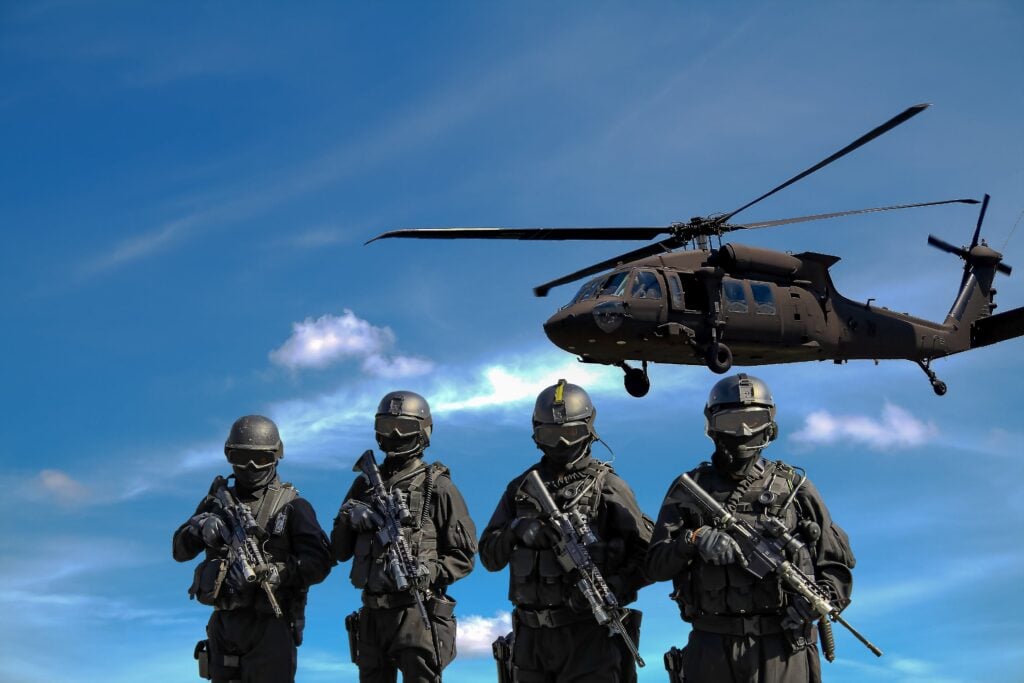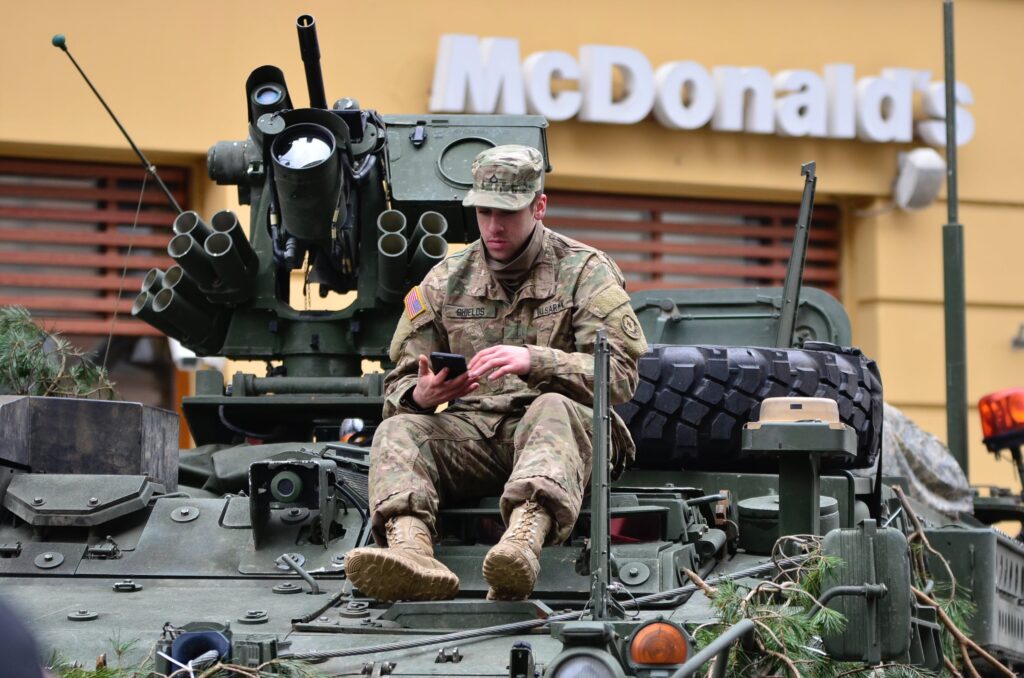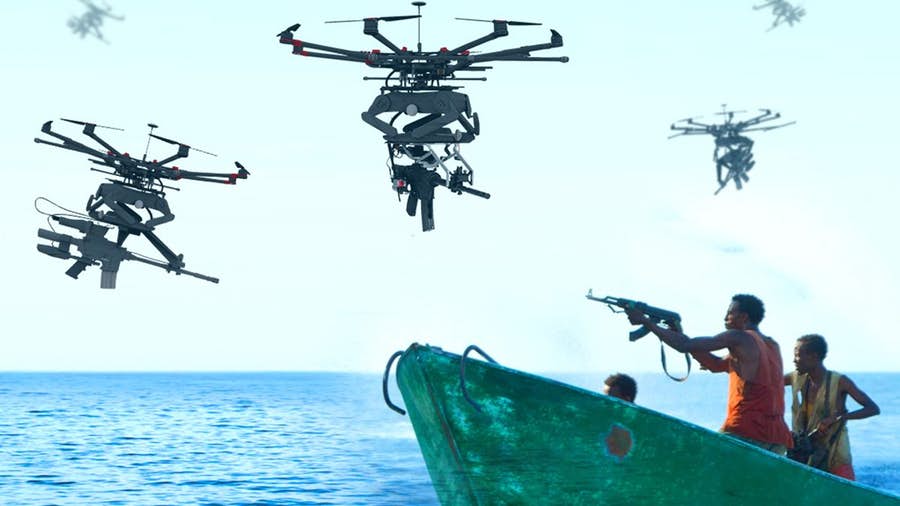
International military firearms standards are critical for ensuring the safety, and effectiveness of firearms used by armed forces around the globe. These standards cover a wide range of aspects, including caliber specifications, firing mechanisms, durability, and environmental resistance. They facilitate collaboration and logistical support among allies and provide benchmarks for the development and evaluation of military firearms.
They also help the American, Russian and Chinese military complexes expand their reach with deals to supply individual countries and regimes. That’s the downside, largely…
Right now America has loaned the Ukraine vast amounts of money to buy weapons. The only catch is that it must buy American and American allied weapons. In the war with Russia, the Ukraine has little choice, and it’s the same with African nations who receive shipments of AK-47s and Russian weapons to help decide their own conflicts.
There’s normally a pretty sizeable bill in terms of power and influence, hidden in the small print. International military standards are just one way that the world’s super powers keep smaller countries on their side and co-operative.

The Benefits of International Standards
It’s not a totally Machiavellian system. There are real benefits to international standards, including:
Interoperability: International standards enable forces from different countries to operate seamlessly together, sharing ammunition and parts when necessary. This is particularly crucial in joint operations, peacekeeping missions, and NATO deployments.
Quality and Reliability: Setting and adhering to rigorous standards ensures that military firearms meet a baseline level of quality and reliability, essential for the safety and effectiveness of military personnel in operational environments.
Innovation and Development: Standards drive innovation by establishing performance benchmarks that firearms manufacturers strive to exceed, leading to advancements in firearm technology and capabilities.
Examples of International Military Firearms Standards
NATO Standards (STANAG): The North Atlantic Treaty Organization (NATO) has developed a series of Standardization Agreements (STANAGs) that, among other things, define calibers, dimensions, and characteristics for ammunition, ensuring compatibility across member states. Notable examples include STANAG 2310 for 7.62×51mm NATO ammunition and STANAG 4172 for the 5.56×45mm NATO cartridge. These bullets serve the semi auto 308 Win Mag rifles and the best AR-15s respectively.
Picatinny Rail (MIL-STD-1913): Developed by the United States military, the Picatinny rail is a bracket used on firearms to provide a standard mounting platform for optical sights, tactical lights, and other accessories. Its adoption as a standard has been widespread, enhancing the modularity and versatility of military firearms.
International Small Arms Standards: While not as universally adopted as some NATO standards, various international agreements and guidelines aim to standardize aspects of small arms design, manufacturing, and testing to ensure safety and reliability.
Challenges in Standardization
Diverse Operational Requirements: Different military forces often have unique operational requirements based on their strategic doctrines, geographic conditions, and threat environments, which can complicate the adoption of universal standards. The Isareli military favors the IWI Tavor bullpup rifle, for instance, due to the compact size working better in urban warfare. Americans, meanwhile, prefer the classic AR-15 layout.
Technological Advancements: Rapid advancements in firearms technology and materials science can outpace the development of new standards, leading to periods of incompatibility or obsolescence. Some countries simply cannot keep up without assistance from the superpowers, and that power imbalance is open to exploitation.
National Interests and Industry Influence: National defense policies and the interests of domestic arms manufacturers can sometimes hinder the adoption of international standards, favoring proprietary systems or specifications.
The Impact of Standards on Military Operations
The adoption of international military firearms standards has profoundly impacted military operations, logistics, and procurement. By ensuring compatibility and interoperability, these standards have facilitated multinational defense collaborations and streamlined supply chains for military equipment. Moreover, the drive towards standardization has spurred technological innovations, leading to the development of more effective, reliable, and versatile firearms systems.
Conclusion
International military firearms standards play a pivotal role in shaping the development, procurement, and operational use of military firearms. By fostering interoperability, reliability, and innovation, these standards not only enhance the capabilities of individual soldiers but also strengthen collective security arrangements among allied nations. Despite challenges in adoption and the rapid pace of technological change, the ongoing pursuit of standardization remains a key factor in advancing military effectiveness on the global stage.
This overview highlights the complexity and significance of international military firearms standards, emphasizing their contribution to modern military operations and the broader defense industry.
FAQ
1. What are NATO standards for firearms?
NATO standards, specifically Standardization Agreements (STANAGs), ensure that military equipment, including firearms and ammunition, is interoperable among member countries. STANAGs for firearms cover aspects like ammunition calibers, magazine interfaces, and rail systems for accessories. For example, STANAG 4172 standardizes the 5.56×45mm NATO cartridge, ensuring that rifles and ammunition produced by different nations are compatible across NATO forces. These standards are crucial for joint operations, allowing forces to share logistics and ammunition seamlessly, enhancing operational flexibility and efficiency.
2. Why are international firearms standards important?
International firearms standards are vital for several reasons: they ensure interoperability among allied forces, enhance the safety and reliability of military equipment, and streamline procurement and logistics processes. Standards such as those set by NATO facilitate cooperation in multinational missions, allowing forces from different countries to operate together effectively. They also drive innovation in the defense industry by establishing performance benchmarks, leading to the development of more advanced and reliable firearms and accessories. Ultimately, these standards support the effectiveness and readiness of military forces in various operational scenarios.
3. How do international standards influence firearm design and manufacturing?
International standards significantly influence firearm design and manufacturing by establishing specific requirements that weapons and equipment must meet. Manufacturers aiming to sell to military forces governed by these standards must ensure their products are compliant, which affects design choices, materials selection, and manufacturing processes. For instance, the adoption of the Picatinny rail system (MIL-STD-1913) as a standard for mounting accessories has led manufacturers to incorporate these rails into the design of firearms, enhancing modularity and versatility. Compliance with standards can also open up access to broader markets, including NATO and allied countries.
4. Can national defense policies conflict with international standards?
Yes, national defense policies can sometimes conflict with international standards. While international standards aim to promote interoperability and commonality among allies, individual countries may have unique operational requirements or strategic priorities that lead them to develop or procure weaponry that does not adhere to these standards. Additionally, national interests and the desire to protect domestic industries can result in the adoption of proprietary systems. Such conflicts may hinder international cooperation and interoperability, posing challenges for joint operations and alliances.
5. What is the future of international military firearms standards?
The future of international military firearms standards will likely involve adapting to technological advancements and changing military doctrines. As new technologies emerge, such as smart firearms, directed energy weapons, and advanced materials, standards will need to evolve to incorporate these innovations while maintaining interoperability and safety. Additionally, the growing emphasis on asymmetric warfare and counter-terrorism operations may influence the development of new standards tailored to these challenges. Ongoing collaboration among international defense organizations and industry stakeholders will be crucial in shaping the next generation of military firearms standards.


